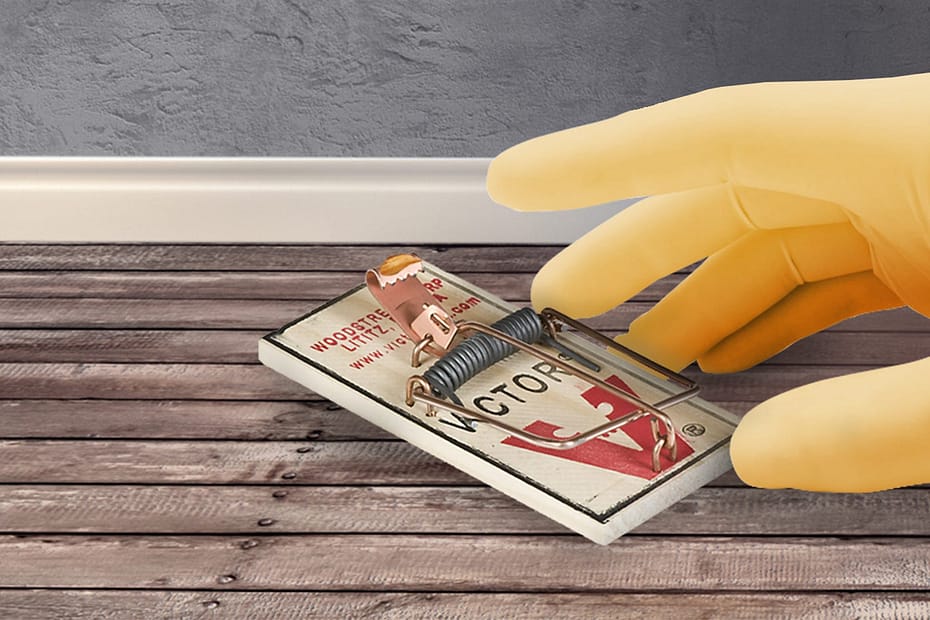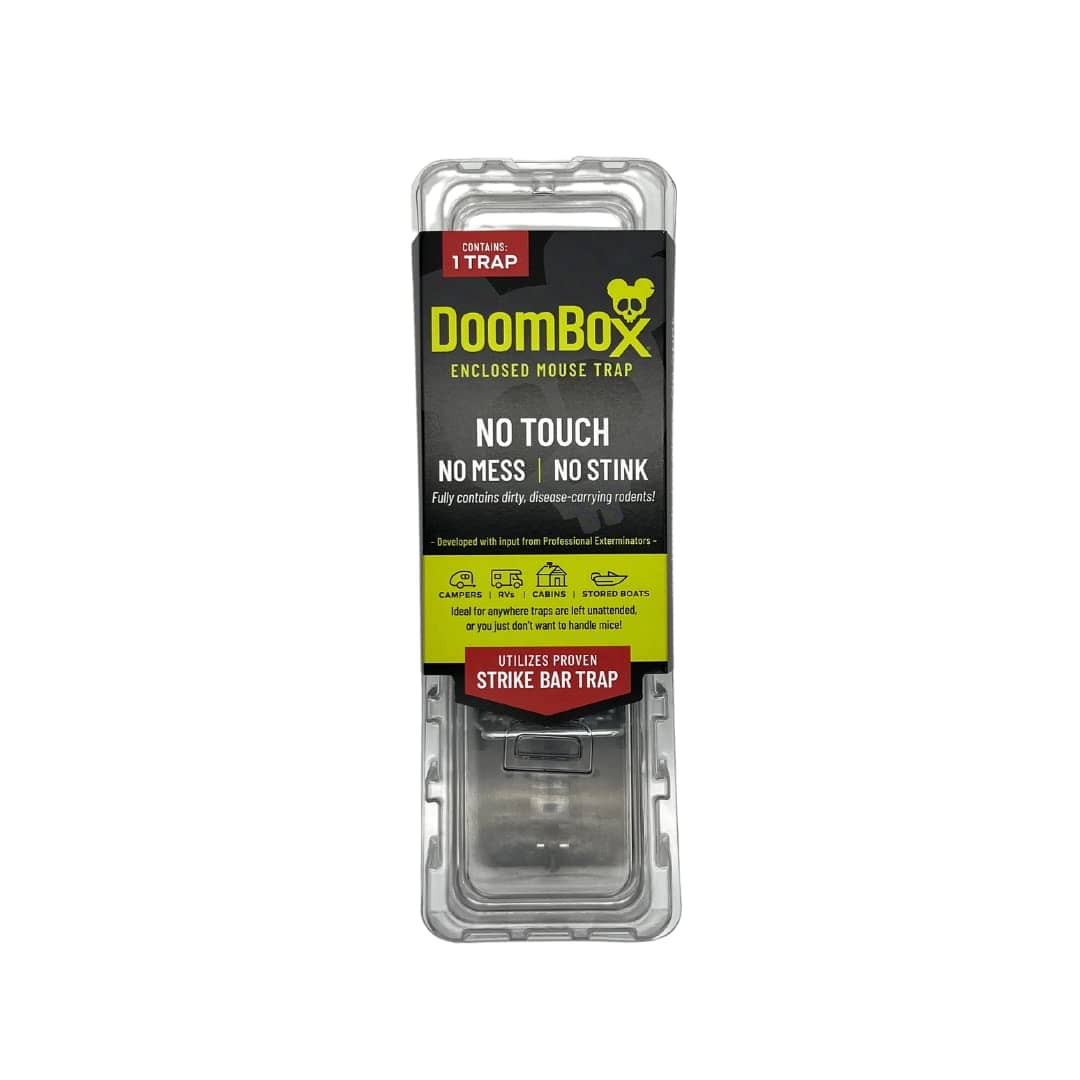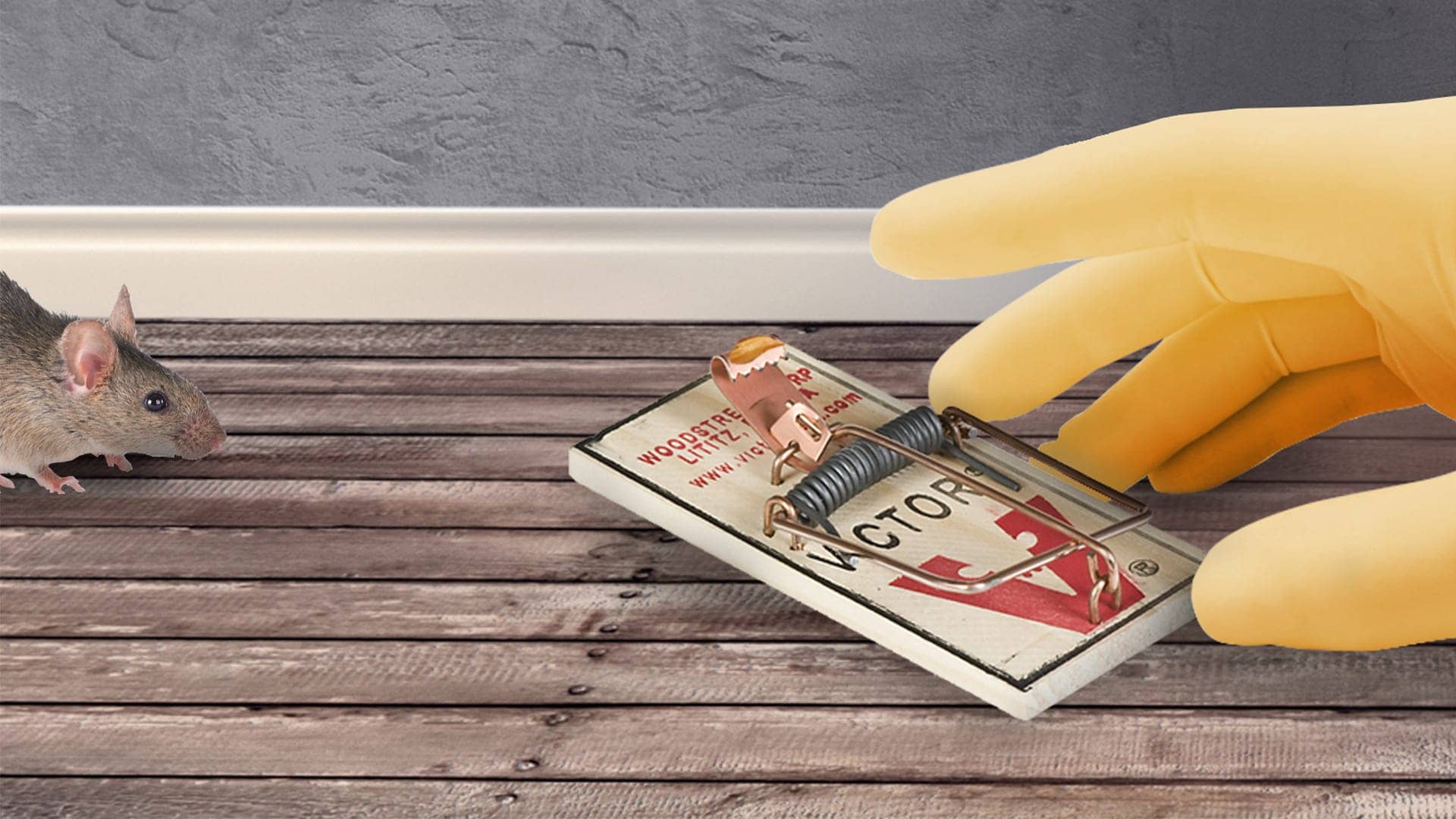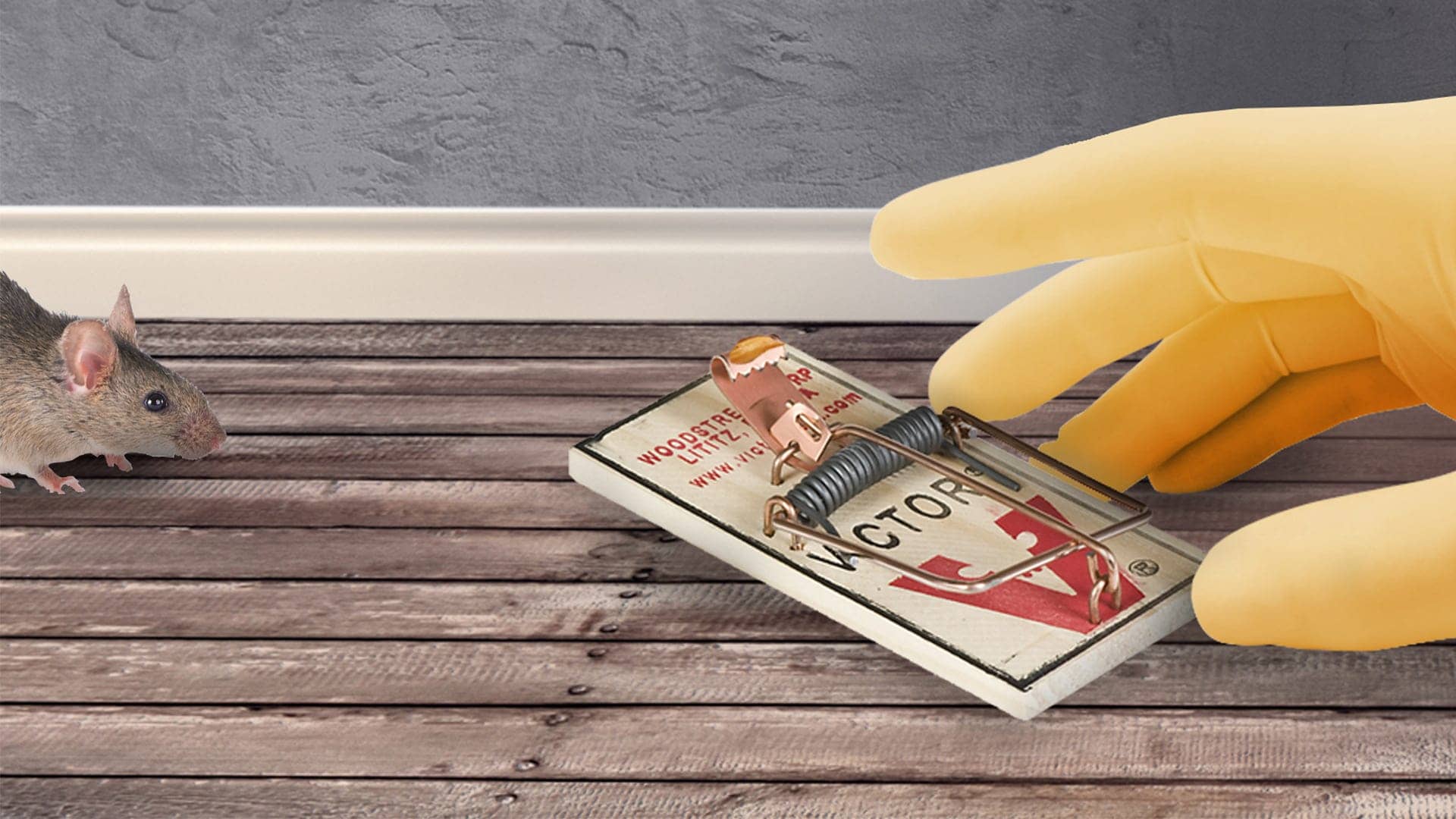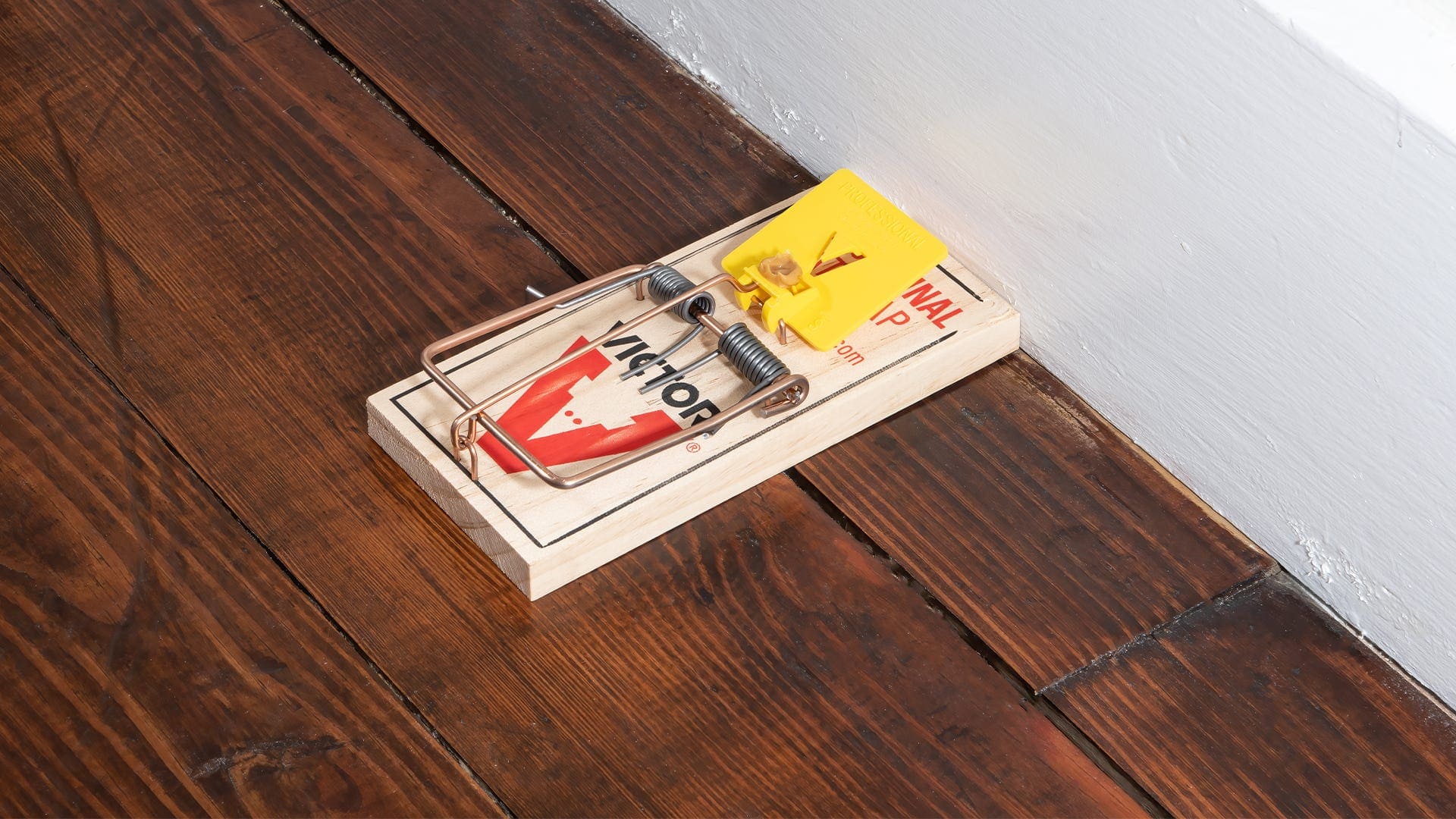The best locations for placing mouse traps are areas where mice are likely to travel or seek shelter, such as along walls, in corners, near food sources, and in enclosed spaces. Mice can be a pesky problem in many homes and businesses.
These small rodents not only cause damage to property but can also spread diseases. The key to effectively trapping mice is to strategically place the traps in areas where they are likely to encounter them. By placing traps along walls, in corners, near food sources, and in enclosed spaces, you increase the chances of capturing mice.
This article will provide you with the best locations for placing mouse traps, helping you tackle any invasion effectively. So, let’s dive in and discover the most effective spots to set up your traps.
Understanding The Behavior Of Mice
Discover the most effective spots for setting up mouse traps by understanding the behavior of mice. Identify strategic locations around your home to ensure successful trapping and get rid of these unwanted pests.
Mice are small, agile creatures that can cause significant damage if left unchecked. Understanding their behavior is crucial when it comes to effectively placing mouse traps. Here are some specific behaviors that impact trap placement:
- Nocturnal Nature: Mice are primarily active during the night, making it essential to focus your efforts during these hours. As such, place mouse traps in areas where mice are likely to venture in search of food and shelter.
- Preferred Habitats: Mice typically inhabit dark, secluded areas close to food sources. Pay close attention to certain areas that are prone to infestation, such as kitchens, garages, attics, and basements. These are high-traffic zones for mice and should be targeted when setting up traps.
- Scurrying and Climbing Abilities: Mice are agile climbers and can easily navigate both horizontal and vertical surfaces. They are especially adept at scaling walls, wires, and pipes, so consider placing traps along these pathways and near potential entry points.
- Frequent Urination: Mice have a habit of marking their territory through urination, leaving behind droplets and smudges along their travel routes. Keep an eye out for these telltale signs as they can indicate areas where mice are more active and should be prioritized for trap placement.
Here are some common signs of mice infestation to look out for:
- Droppings: Mice leave small, pellet-like droppings in areas they frequent. Look for these telltale signs along walls, cabinets, and near food sources.
- Gnaw Marks: Mice have a constant need to chew to keep their teeth trimmed. Look for gnaw marks on wooden furniture, wires, and other materials as it can indicate an infestation.
- Nests: Mice build nests using materials like shredded paper, fabric, and insulation. Check dark corners and hidden spaces for these nests, as they can give you an idea of where to place traps.
- Scampering Sounds: Mice are not the quietest creatures and can be heard moving about at night. If you hear scratching or scampering sounds in your home, it’s a good idea to investigate and strategically place traps in those areas.
Understanding the behavior of mice and identifying signs of infestation are key steps in effectively placing mouse traps. By targeting their preferred habitats and areas of high activity, you increase your chances of successfully eliminating these unwanted guests from your home or property.
Identifying High Traffic Areas
Discover the prime spots for setting mouse traps by identifying high traffic areas in your home. Strategically placing traps near food sources, entry points, and nesting areas can effectively catch unwanted rodents.
When it comes to placing mouse traps effectively, it is crucial to identify the high traffic areas where these pesky rodents frequent the most. By locating these areas, you can maximize the chances of capturing mice and eradicating their presence from your home or workplace.
Here are some key indicators to look out for when identifying high traffic areas for mouse traps:
Locating Mouse Droppings And Urine Trails
- Look for small, dark, and cylindrical droppings scattered across the floor, especially in secluded corners or along the baseboards. Mice tend to use the same pathways repeatedly, so their droppings can act as a reliable sign of their presence.
- Check for urine trails, which can appear as small smudges or streaks on surfaces, particularly on walls and along edges. These trails are left behind when mice rub their bodies against objects, marking their territory.
Evidence Of Gnawing And Chewing
- Examine any areas with visible signs of gnawing, such as chewed wires, cardboard, or wooden materials. Mice have strong teeth that constantly grow, leading them to gnaw on objects to wear down their teeth.
- Pay attention to marks or scratches on surfaces, indicating potential entry points or escape routes that mice may use. Look for gnawed holes or gaps, particularly near baseboards, vents, pipes, or around windows and doors.
Understanding Entry Points And Escape Routes
- Identify potential entry points by checking for gaps, cracks, or holes in your home or building’s exterior. Mice can squeeze through small openings, so even the tiniest gaps should be considered.
- Focus on areas where utility lines, cables, or pipes enter your home, as these are common entry points for mice. Seal any openings around these areas to prevent their entry.
- Explore areas where mice might find easy escape routes, such as cluttered rooms, storage areas, or spaces under furniture. Removing clutter and sealing off access to these areas can help in trapping them efficiently.
Keep in mind that these high traffic areas may vary depending on the specific layout and conditions of your property. By familiarizing yourself with the signs of mouse activity and understanding their habits, you can strategically place mouse traps in the most effective locations, increasing your chances of successfully eliminating these unwanted guests.
Strategic Placement Of Mouse Traps
Discover the optimal spots to place mouse traps for maximum effectiveness. Find out where to strategically position them to catch those pesky rodents.
Using The Natural Wanderings Of Mice To Your Advantage
- Cover all potential entry points: Place traps near areas where mice may enter your home, such as gaps in the foundation, around doors or windows, or where utility lines enter the building.
- Follow the trail: Mice tend to leave trails of dark-colored droppings along their paths. Set traps along these routes to increase your chances of catching them.
- Don’t forget corners: Mice often run along the edges of walls, so focus your trap placement in these corners.
- Consider their favorite hiding spots: Mice like to hide in dark and secluded areas. Think about places like behind cabinets, under furniture, or inside cluttered areas.
- Think vertical: Mice are excellent climbers, so don’t limit your traps to just the floor. Set them on shelves, ledges, or even in attics if needed.
Avoiding Common Placement Mistakes
- Don’t overcrowd: Although you want to catch as many mice as possible, don’t place traps too close to each other. Give enough space for each trap to be effective.
- Stay away from kids and pets: Ensure that traps are placed in areas out of the reach of children and pets to avoid accidents or injuries.
- Avoid humid locations: Mice are less likely to frequent damp or humid areas. Keep this in mind when choosing trap locations.
- Don’t ignore their nest: If you’ve spotted signs of a mouse nest, be sure to place traps nearby. This is where they feel safest and are most likely to be caught.
Identifying The Best Areas For Trapping Success
- Kitchen and pantry: Mice are attracted to food sources. Place traps near areas where food is stored or prepared, such as pantries, cabinets, or behind appliances.
- Garage and storage areas: These areas often offer favorable conditions for mice, with plenty of hiding spots. Set traps near stored items and along walls.
- Basements and crawl spaces: Dark and quiet, these areas are commonly frequented by mice. Focus on corners, along walls, and near any openings.
- Outdoor areas: If you suspect mice are coming from outside, place traps near potential entry points like doors, windows, or vents.
Remember, proper placement of mouse traps can greatly increase your chance of catching these unwanted critters. By using their natural habits and avoiding common mistakes, you’ll maximize your success in eliminating mice from your home.
Indoor Locations For Mouse Traps
Ideal locations for mouse traps in indoor settings may include areas near food sources, along walls, behind appliances, inside cabinets, and in dark corners. Placing traps strategically can help effectively catch mice and prevent further infestation.
When it comes to getting rid of pesky mice in your home, it’s important to strategically place your traps in the most effective locations. In this section, we will discuss key areas in the kitchen and pantry, placing traps near electrical and plumbing access points, and utilizing hidden nooks and crannies in living spaces.
Key Areas In The Kitchen And Pantry:
- Near food storage: Place mouse traps in close proximity to where you store food, such as cabinets or pantry shelves. Mice are attracted to these areas and will likely encounter the traps.
- Behind appliances: Mice often explore around kitchen appliances like refrigerators and stoves. Placing traps behind these appliances can increase the chance of catching a mouse.
Placing Traps Near Electrical And Plumbing Access Points:
- Attics and crawl spaces: Mice can enter your house through small gaps in these areas. Install traps near access points, such as openings for electrical wires or plumbing pipes.
- Near floor vents and utility entryways: Mice can enter your home through gaps around floor vents or utility entry points. Position traps in these areas to intercept them.
Utilizing Hidden Nooks And Crannies In Living Spaces:
- Behind furniture and along walls: Mice tend to stick close to walls and frequently travel along them. Placing traps behind furniture or along walls can intercept their movement.
- Underneath sinks: Mice are often attracted to areas with water sources. Placing traps under sinks where plumbing is located can be effective.
Remember to check traps regularly and dispose of any captured mice promptly. By strategically placing mouse traps in these indoor locations, you can increase your chances of successfully eliminating a mouse infestation.
Outdoor Locations For Mouse Traps
Discover the optimal outdoor locations to place mouse traps for effective rodent control. Choose strategic spots near potential entry points, food sources, and evidence of mouse activity to maximize trapping success. Safeguard your home by implementing these best practices in mouse trap placement.
Positioning traps near garbage bins and compost areas:
- Place mouse traps strategically around garbage bins and compost areas to target mice attracted to food sources.
- Consider placing traps close to the bins or at entry points to prevent rodents from reaching the garbage.
- By targeting these areas, you can effectively control mouse populations and reduce the risk of them infesting your outdoor spaces.
Placing traps in sheds, garages, and other outbuildings:
- Set up mouse traps in sheds, garages, and other outbuildings to prevent mice from nesting and causing damage.
- Place traps near potential entry points such as gaps, cracks, or holes to catch mice attempting to infiltrate these spaces.
- By using traps in conjunction with proper sealing and maintenance, you can safeguard these areas from mouse infestations.
Considerations for weatherproofing and durability:
- Use weatherproof mouse traps specifically designed to withstand outdoor conditions, including rain, snow, and temperature fluctuations.
- Look for traps made from durable materials like metal or plastic, ensuring they are resistant to rust or degradation.
- Properly maintain and inspect traps periodically to ensure their effectiveness and longevity in outdoor settings.
- Weatherproof and durable traps ensure reliable performance and increase the chances of successful mouse control outdoors.
Remember, strategically placing mouse traps in outdoor locations near garbage bins and compost areas, as well as in sheds, garages, and other outbuildings, is crucial for effective mouse control. Additionally, selecting weatherproof and durable traps ensures their longevity and functionality.
By following these guidelines, you can keep outdoor spaces free from unwanted mice and minimize the risk of infestations.
Essential Tips For Effective Trapping
Find the best spots to place mouse traps by considering high traffic areas, like near food sources and along walls. Optimal locations are behind appliances, under sinks, and in hidden corners to increase your chances of an effective trapping.
Using The Right Bait To Attract Mice
- Mice are attracted to different types of bait, and choosing the right one can significantly increase your chances of trapping them effectively.
- Some popular mouse baits include peanut butter, cheese, chocolate, and dried fruits.
- Place a small amount of bait on the trap to entice the mice. Remember, a little goes a long way.
- Experiment with different types of bait to see which one is most effective in your specific location.
Setting Traps Correctly For Maximum Effectiveness
- Properly positioning your mouse traps is essential for increasing their effectiveness.
- Place the traps along the walls and in areas where mouse activity has been observed, such as near droppings or chew marks.
- Ensure that the traps are securely set and ready to snap when triggered.
- Consider using multiple traps in a single location to increase your chances of catching multiple mice at once.
- Avoid placing traps in areas where children or pets can access them to prevent any accidents.
Monitoring And Checking Traps Regularly For Success
- Simply setting the traps is not enough; regular monitoring and checking are crucial for successful trapping.
- Check the traps at least once a day to see if any mice have been caught.
- If you find a mouse trapped, carefully dispose of it and reset the trap in the same location.
- Keep track of the number of mice caught to determine the effectiveness of your trapping efforts.
- If you’re not having success with a particular location, try moving the traps to a different area with more mouse activity.
Remember, mouse trapping requires patience and persistence. By using the right bait, setting traps correctly, and monitoring them regularly, you can increase your chances of successfully eliminating mice from your desired locations. Happy trapping!
The Importance Of Good Hygiene
Maintaining good hygiene is crucial to prevent the spread of diseases and ensure overall well-being. When it comes to placing mouse traps, the best locations include areas with high rodent activity such as kitchens, basements, and attics. These strategic placements help to effectively control mouse populations and minimize the risk of contamination.
Maintaining good hygiene is essential when it comes to preventing and getting rid of mice infestations. By following proper cleaning and sanitation practices, securing food and waste storage areas, and conducting regular maintenance, you can effectively discourage mice from entering your home or office.
Here are some important steps to consider:
Proper Cleaning And Sanitation To Discourage Mice:
- Ensure that all surfaces are clean and free of food debris by regularly wiping down countertops, tables, and floors.
- Store food in airtight containers to prevent mice from accessing pantry items.
- Dispose of trash in securely sealed bins and regularly empty them.
- Sweep and mop floors to remove any food particles that may attract mice.
- Keep all areas clean and clutter-free to eliminate potential hiding spots for mice.
- Seal any cracks or holes that mice could use as entry points, paying attention to gaps near pipes, vents, and windows.
Securing Food And Waste Storage Areas:
- Store food in sturdy containers that mice cannot chew through, such as glass or metal containers.
- Keep pet food in sealed containers and clean up any spills or leftover food promptly.
- Ensure that garbage cans have secure lids and are kept away from the perimeter of buildings.
- Place traps or deterrents near food storage areas to discourage mice from approaching.
Regular Maintenance To Prevent Future Infestations:
- Inspect the premises regularly for signs of mouse activity, such as droppings or gnaw marks.
- Repair any leaky pipes or faucets that could provide a water source for mice.
- Trim vegetation away from the exterior of the building to minimize potential shelter for mice.
- Clean and maintain outdoor storage areas to reduce the likelihood of attracting mice.
- Set up mouse traps or employ professional pest control if needed, to eliminate existing mice and prevent future infestations.
Remember, implementing proper hygiene practices is crucial in deterring mice from entering and causing problems in your space. By following these guidelines, you can create an environment that is less appealing to mice and minimize the chances of having to deal with an infestation.
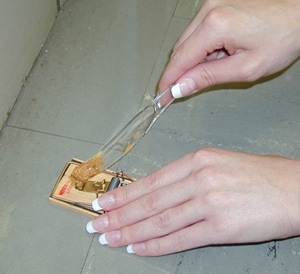
Credit: www.cdc.gov
Frequently Asked Questions Of Best Locations For Placing Mouse Traps
Where Should Mouse Traps Be Placed In The House?
Place mouse traps in areas where you see signs of mice, such as near walls or along their travel paths.
Can Mice Learn To Avoid Mouse Traps?
Yes, mice can learn to avoid mouse traps, making it challenging to catch them.
Should You Set Mouse Traps Outside Your House?
Yes, it is recommended to set mouse traps outside your house to control and prevent infestations.
What Attracts Mice To Traps The Most?
Mice are most attracted to traps with food bait, such as cheese or peanut butter.
Conclusion
Finding the best locations for placing mouse traps is crucial in effectively controlling rodent infestations. By strategically placing traps in areas where mice are likely to travel, such as along walls and near entry points, you can increase your chances of capturing these unwanted pests.
Attics, basements, kitchens, and garages are common hotspots that should not be overlooked. Remember to place the traps in hidden locations and secure them to prevent accidental triggers or tampering. Regularly check and reset the traps to ensure they remain effective.
Additionally, implementing proactive measures like sealing off potential entry points and eliminating food sources can further enhance your pest control efforts. By following these guidelines and being proactive in your approach, you can effectively protect your home and property from mice infestations.
